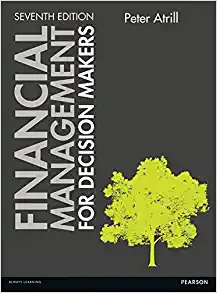Question
1.Portfolio diversification cannot eliminate _________. Company-specific risk Diversifiable risk. Systematic risk Unsystematic risk 2.Which one of the following is not an example of systematic risk?
1.Portfolio diversification cannot eliminate _________.
Company-specific risk
Diversifiable risk.
Systematic risk
Unsystematic risk
2.Which one of the following is not an example of systematic risk?
Income tax rates are revised by the federal government.
The unemployment rate rises to 5.5%.
The Fed lowers its discount rate.
A CEO is fired by the firm's board.
3.Standard deviation measures _____ risk while beta measures _____ risk.
systematic; unsystematic
unsystematic; systematic
total; unsystematic
total; systematic
4.A stock is expected to return 10% in an economic boom, 6% in a normal economy, and 3% in a recessionary economy. Which one of the following will increase the overall expected rate of return on this stock?
An increase in the probability of a recession occurring
A decrease in the probability of an economic boom
An increase in the probability of an economic boom
An decrease in the rate of return in a recessionary economy
5.Which one of the following is the slope of the security market line?
Risk-free rate
Market risk premium
Beta coefficient
Market rate of return
6.A stock has a 1/3 chance of producing an 18% return, a 1/3 chance of producing a 12% return, and a 1/3 chance of producing a 6% return.What is the stock's expected return?
-10.0%
5.0%
10.0%
12.0%
7.An investor has a $100,000 stock portfolio.$32,000 is invested in a stock with a beta of 0.75 and the remainder is invested in a stock with a beta of 1.38. These are the only two investments in his portfolio.What is his portfolio's beta?
0.75
1.18
1.29
1.38
8.A company's stock has a beta of 2.0, the risk-free rate is 4.25%, and the market risk premium is 5.50%.What is its required rate of return?
10.25%
15.25%
11.95%
12.83%
9.You own a $3,500 portfolio consisting of two stocks, A and B. Stock A is valued at $1,750 and has an expected return of 12%. Stock B has an expected return of 8%. What are the weights of stock A and B in the portfolio?
50%, 50%
48%, 52%
52%, 48%
65%, 35%
10.Based on the information from Question 9, what is the expected return on the portfolio?
9.4%
10.5%
10.0%
12.8%
Step by Step Solution
There are 3 Steps involved in it
Step: 1

Get Instant Access to Expert-Tailored Solutions
See step-by-step solutions with expert insights and AI powered tools for academic success
Step: 2

Step: 3

Ace Your Homework with AI
Get the answers you need in no time with our AI-driven, step-by-step assistance
Get Started


